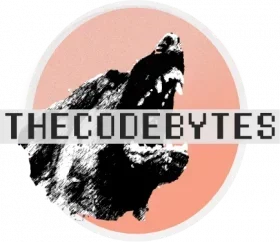So, you want to know if Python is an open-source language? Well, the answer is yes, Python is open-source. Python is free and easily modified by a community of developers, is developed under an OSI-approved license, copyrighted Under a GPL-Compatible License, integrates with other languages, and has so many more characteristics that make it an open-source language.
In this article, we are going to break down exactly why we can consider Python open-source so you have a full understanding.
What Is Open-Source Software?
Before we get too far ahead of ourselves, let’s first define what open-source software is.
Open-source software is a piece of software released under a license that grants the user the right to use, study, change, and distribute the software and its source code to anyone for any purpose.
1. Python Is Easily Modified by a Community of Developers
First things first, Python is free to use. That means you can download Python, write Python code and even sell and giveaway Python code to anyone for free. This is a key point in being open-source.
Furthermore, you have direct access to both view and modify the Python code. This is the CPython core project on GitHub. If you saw an issue with the language or wanted to modify it, you could make a pull request and contribute to the language! However, being a contributor would obviously go through a hardcore vetting process and would be very hard to do. Regardless, the possibility is there. You could add to their documentation, create bug fixes, add unit tests or do pretty much anything that would improve the Python language.
That is what makes open source so powerful. It relies on a community of developers like use to make it great!
A language that is not open to being used by anyone would actually be a proprietary language.
Proprietary languages usually exist privately within companies that are not open for the public to use.
2. Python Is Developed Under an OSi-approved License
If you want more concrete reasoning of why Python is open-source we can look at the fact that it is developed under an OSi-approved license.
This means that legally, everyone is permitted unrestricted usage, modification, and distribution of Python. A license must go through the Open Source Initiative’s license review procedure to be accepted by the OSI.
For the language to be OSI certified, it must be made available under a license that guarantees the right to use, read, and modify the software. Python passes the OSI test.
3. Python Is Copyrighted Under a GPL-Compatible License
Furthermore, Python is copyrighted under a GPL-Compatible license. This implies that programs with code distributed under one license, and those with code distributed under the GNU GPL are compatible and can be combined.
The GNU General Public License is a collection of widely accepted licenses that give users the freedom to use, examine, share, and modify software.
Python itself is distributable. If a Python file uses the standard library, it can be shared and reused. For example, all Python libraries that can be downloaded through a package manager, such as PIP, are distributable.
4. Other Characteristics of Open-Source Languages
In addition to the above points, we can also make the point that Python is open-source given these other benefits of Python.
Python Integrates with Other Programming Languages
Python has excellent integration options for languages like C++, Java, Rust, and Go and native support for C. This is a key characteristic of an open-source language.
Since the language is easily obtainable and can be legally re-distributed, as mentioned above, it makes it easy to integrate the language with many other popular languages.
Python Source Code Integrity is Maintainable
Open-source languages have the advantage of having great code that can be maintained, and Python is one of those languages. As we mentioned above, anyone has access to the Python core files and has the ability to modify them.
Unlike proprietary languages, open-source languages have great documentation and we can be highly certain that the code works as expected. High source code integrity is an important benefit of open-source code.
Python is Easy to Learn with Vast Libraries
Finally, Python is very easy to learn with a vast amount of libraries. This is mainly due to the fact that many people know the language and are able to teach it online. Just look at the wide array of videos you can find on udemy!
In addition, since it’s open source, there are thousands of packages that you can download and start using immediately and for free.
This makes coding in Python easy, straightforward and efficient.
Wrapping Up
Hopefully, it is now very clear to you that Python is an open-source programming language. Even you could contribute to the language! There are also a few licenses attached to the language that makes it legal for you to read, modify, distribute and use Python in your projects.
If you’re new to Python and want to know how to get started with it, check out this article. If you want to check out some great Python tutorials to make you a master in no time, check out these udemy videos!
